
The Basic Trash Bag Balloon is a short cylindrical balloon about 25 inches (64 cm) high and about 20 inches (50 cm) across. The top of the balloon is closed with a straight seam, like the bottom of a tube of toothpaste. This type of seam makes two points stick out like horns on either side.
The balloon is made by cutting off the complex pleated end of a trash bag and taping the open end shut in a straight line. The straight seam increases the volume in the balloon, which increases the lift.
Thin cardboard is taped to the open edge of the balloon to keep the bottom weighed down and keep the balloon upright.
The Basic Trash Bag Balloon is very easy to make. It takes only a few minutes, has no complicated parts, and doesn’t need a naked flame to make it fly.
The balloon flies well indoors if it is made from very thin, lightweight trash bags. The air in the balloon is heated using an electric toaster or similar electric heater, and the balloon flies until the air starts to cool. You can fly the balloon outside on still days, but you will need to run an extension cord outside for the toaster or use a different type of heater.
A balloon is just an airtight bag full of gas. If the gas is light enough, it can lift the weight of the bag and the balloon will fly. That’s it. You can make the gas bag out of pretty much anything you like, so long as it is lightweight and airtight.
Polyethylene is an ideal material for lightweight balloons. It is completely airtight and it can be made into very thin sheets that weigh almost nothing. Polyethylene is made into trash bags by blowing pressurized air into a long cylinder of hot, rubbery plastic. This makes the plastic stretch, and when it stretches it gets much thinner. If you blow a lot of air into the cylinder, you can make the plastic very thin. Ordinary trash bags use plastic sheet that is only 0.001 inch (0.02 mm) thick. That’s about one-third of the thickness of a human hair.
It didn’t take long for scientists to realize that polyethylene sheet is great for making balloons. Polyethylene was first produced commercially in 1939, and by 1947, giant polyethylene gas balloons were already being used in classified US military projects. For example, in 1947, Project Mogul used giant polyethylene balloons (called Skyhook balloons) to carry special microphones high into the stratosphere to listen for very low frequency sound waves generated by secret Soviet atomic bomb tests. By 1952, the same Skyhook balloons were carrying spy cameras over the Soviet Union to photograph research sites, military installations, and missile bases from an altitude of over 30,000 feet (9 km). Because they flew so high, Soviet warplanes could not shoot them down.
For a Basic Trash Bag Balloon, you need to use the thinnest and largest brand of trash bags you can find. Many brands of household trash bags are too thick to work well. You want the trash bags that are so thin they will split and spill garbage everywhere when you try to lift a full one! They are usually the cheapest brand; you can find some tips on finding good trash bags in chapter 11 (page 215).
Of course, you don’t have to use trash bags. Any lightweight polyethylene will do. If you can find lightweight polyethylene dry cleaner bags, these work just as well. Decorating suppliers also sell thin polyethylene drop-cloth sheet to protect furniture from paint splashes. This can be taped into a cylinder to make a balloon.
A balloon works by having gas trapped in an airtight bag. The balloon flies when the gas is light enough to lift the bag. That’s quite easy to understand when you have a lightweight gas like hydrogen or helium inside the bag, but why does hot air work? Why does air get lighter when you heat it up?
If you have a bag of gas at the same pressure as the outside world, then most of the inside of the bag will be filled with empty space. The gas is made up of solid particles called molecules, but there aren’t very many of them and they are separated from each other by large distances. The space between the particles is so big that they don’t have much effect on each other, and they behave like beads or marbles rattling around in the bag.
So if a bag full of gas is mostly empty space, why can’t you flatten the bag so that the contents are only a few molecules thick? How do the particles of gas know that they have to push back when you try to squash the bag?
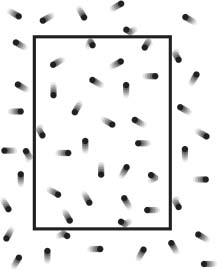
The answer is in all that crashing about. Any gas that is even slightly warmer than the cold depths of outer space will have atoms and molecules that zoom around. That’s what heat is: the vibration or movement energy of atoms and molecules. The more energy they pick up—that is, the hotter they get—the faster they fly around inside the bag, and the faster they crash into the walls of the bag. Molecules are very springy, so then they bounce and head off in another direction. But when the molecules crash into the wall of the bag, they give a little kick to it. Millions of molecules crash into the wall of the bag every second, each molecule giving the wall a tiny kick as it bounces off. There are so many little kicks happening that the wall feels this as a constant force spread out over its whole area. We call this spread-out force pressure. From this you can begin to understand how a hot air balloon gets off the ground.
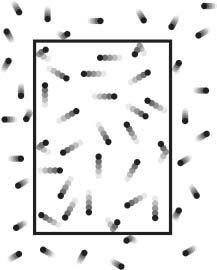
If you add heat to a gas, the molecules move around even faster. Because they are moving faster, they are going to hit the walls of the bag a lot harder and also faster—moving molecules travel across the bag in a shorter time and hit the walls more often. This means that the spread-out force on the skin of the bag will be higher—harder kicks and more of them every second. A scientist would say that the gas has a higher pressure now that it has been heated.
Gases flow from an area of high pressure to an area of low pressure. Imagine blowing out the candles on a birthday cake. You raise the pressure of the air in your lungs to make it flow out of your mouth quickly.
If you carefully make an opening in your bag of hot gas, some of the gas flows out. Because some of the gas has flowed out, the inside skin will now be getting fewer kicks than it did before. The gas will continue to flow out until the average force from the fewer but harder kicks on the inside of the bag’s skin matches the force from the many more weaker kicks on the outside.

But what has happened to the gas inside the bag? The bag now contains fewer molecules than it did before we started heating the gas. The bag is the same size, but now the gas weighs less than it did before as there are fewer molecules. Scientists call the amount that a gas weighs for a given volume its density. So by heating the gas and allowing some of the hot gas to escape, the pressure returns to normal and you have a gas with a lower density—the gas weighs less for the same volume.
So what happens now? Imagine you hold a block of wood underwater. When you let go, the block floats up to the surface because the wood is less dense than the water surrounding it.
The balloon reacts in the same manner; it is just submerged in air rather than water. If you heat the gas inside a balloon, you make the bubble of gas inside it a lower density so that it wants to float upward, like the block in the water.
Adult supervision required
Materials
Lightweight plastic trash bag (the thinnest you can find— see chapter 11, page 215)
Thin clear tape, lightweight masking tape, or similar
Empty cereal boxes (or other source of thin cardboard)
Tools
Scissors
Ruler
Pen
What to Do If Things Go Wrong
If you make small holes in the plastic sheet or there are small gaps in the seams, see chapter 11 (page 213) to find out how to fix them.
If you put the tape in the wrong place, do not try to unpeel it, as you will just tear the plastic sheet. Complete the seam as best you can and put another length of tape over the gap.
How to Make the Envelope

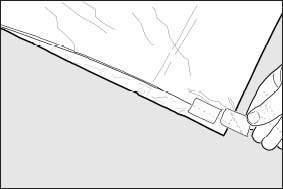
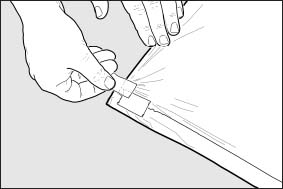
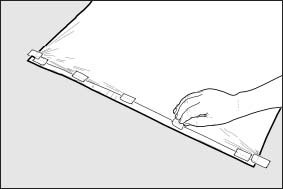
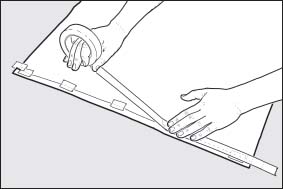
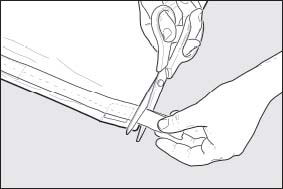
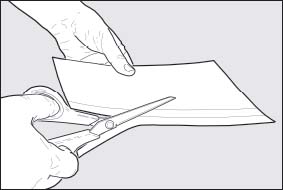
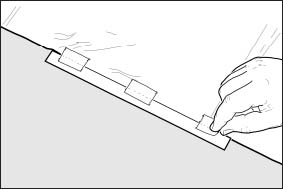
What Next?
The balloon is complete and ready to fly. See chapter 2 for instructions on flying indoors using an electric toaster as a heater (page 33).
If lots of people are making these balloons, you can have competitions to see which balloon will stay in the air for the longest. Fly them in a large sports hall to give the balloons a chance to take off without hitting the ceiling. If you can set up a stovepipe or metal shield around a camping stove, try launching the balloons outside so you can have a competition to see which balloon will drift farthest away from the launch point. You need a fairly calm day to do this, but it can be a great way to finish a group project.
To make a Basic Trash Bag Balloon that flies even better, make an envelope from two trash bags rather than just one. Build the Trash Bag Sausage envelope described in chapter 4 (page 57), but instead of going on to make a frame and burner, just attach cardboard strips onto the bottom to keep the envelope upright.